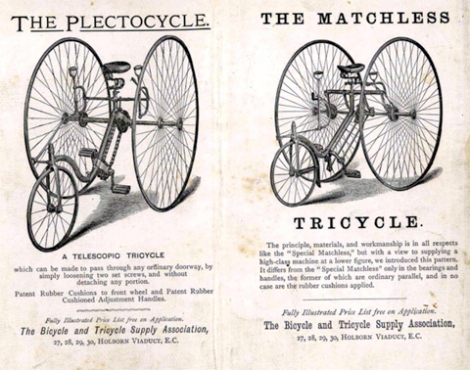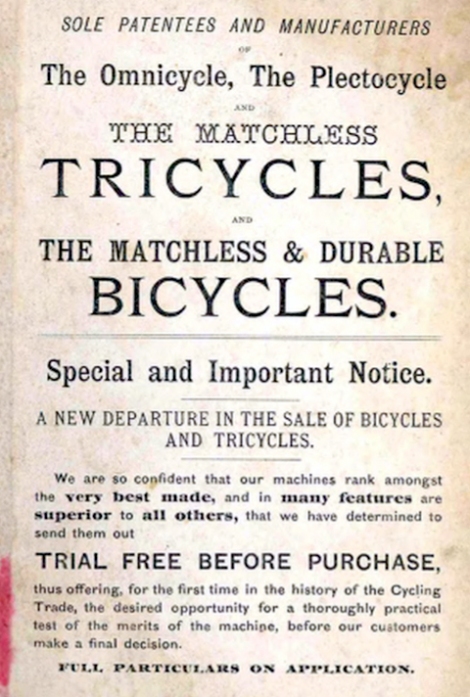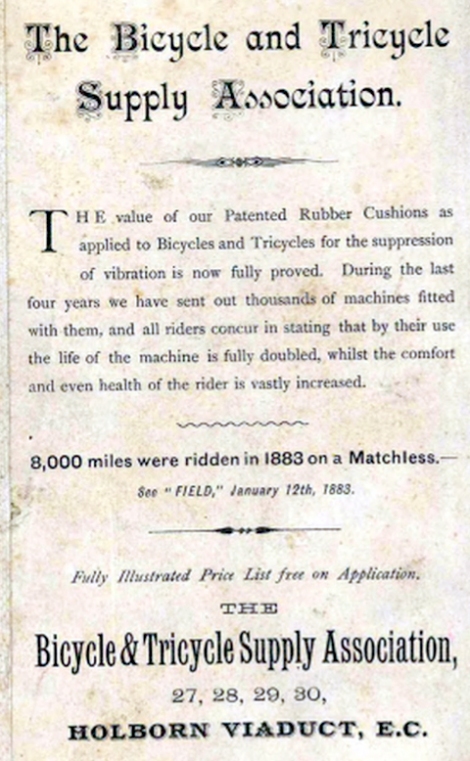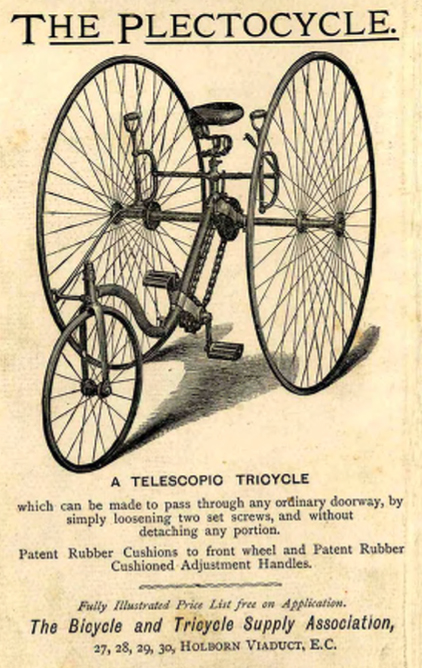TRICYCLES v BICYCLES
developed into
CARS v MOTORCYCLES
It’s interesting to note the social competition between bicycles and tricycles in the late 19th century because, of course, these two modes of transport, though closely related at the beginning, soon developed separately into vehicles with an even greater social divide – motorcycles and cars.
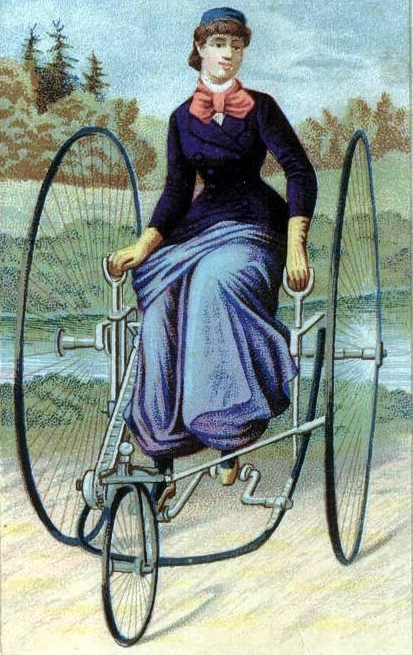
Bicycles in this era were ‘high wheelers’ (penny farthings), and to ride them required some athletic ability. They were the preserve of fit, adventurous rich men. When tricycles first came onto the market they were considered suitable only for old folks or timid cyclists. But, within only a few years, tricycle design had developed sufficiently to compete with the high wheeler, and tricycles had become extremely fashionable. As well as being much safer on the road, the advantage of being able to carry luggage (and, in later models, a passenger) on a tricycle certainly contributed to the development of the car.
By the late 1870s, the speed gap between two- and three-wheelers had narrowed to only about two or three miles per hour (says David V. Herlihy in Bicycle), and the fashionable circles of Britain took note. Under the headline ‘Tricycles Coming to the Front’ The World of London reported in 1878: “There is quite a rage for tricycling this season at Brighton. Owing to the marvelous perfection attained in steel work, tricycles are now produced, combining great strength with extreme lightness. The mode of propulsion having also been greatly improved, they have become a fascintaing and exhilarating means of exercise and locomotion. Ladies have taken to them, doctors do their visits on them, and tradesmen circulate their goods by them.”
In 1881, Queen Victoria purchased a pair of tricycles, increasing their popularity further, and tricyclists soon had their own magazines and clubs. The front-steering lever-drive tricycle was the most popular of various designs available. The illustration above shows a slightly different lever arrangement than on my Plectocycle seen below (the other lever in the picture operates a rear brake). You can clearly see how women could ride them without the need to amend their costume, perhaps the most important consideration of the time.
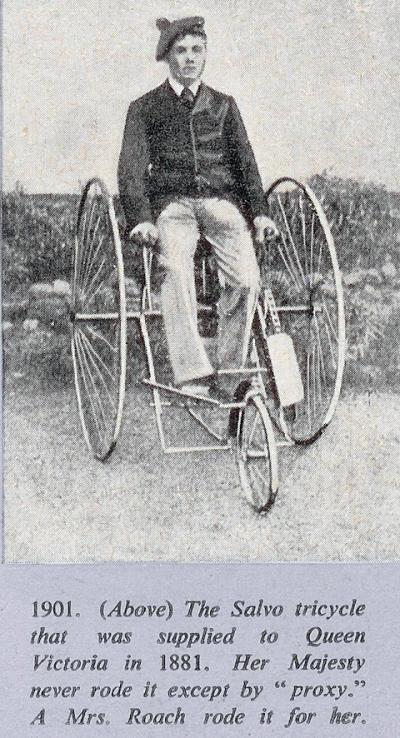
Whereas bicycle clubs and runs tended to focus on competition, tricycling events were a social affair, often involving a parade around town followed by tea. Tricycles were more expensive, so tended to a more upmarket clientele. Tricycle enthusiasts soon started to look down on cyclists, especially as secondhand high wheelers were by now in the hands of lower-class youths, removing their snob appeal.
Promoted as touring machines, tricycle manufacturers were keen to demonstrate their practicalities. In 1882, Mr A. Bird rode a Humber tricycle from Birmingham to Cambridge. The distance quoted is 222 miles, so I assume this must have been a return journey, and Mr Bird completed it in 24 hours, only 20 miles less than the bicycle record of the time.
The chain drives of these tricycles inspired inventors to innovate further. Development of chain-driven ’safety’ bicycles led to the display of the Rover Safety at the 1885 Stanley Show, and bicycles suddenly changed – that design remains more or less the same today. High wheel bicycles and tricycles soon became obsolete, and enormous demand ensued for the revolutionary new, cheaper, safer, faster, and much more ridable bicycles.
During their brief reign high-wheel tricycles had an enormous influence on society, capturing the public imagination not only in Great Britain where they flourished but around the world too. As a result, bicycles, tricycles and, within 20 years, motorcycles and cars, were firmly implanted on the roads of the world. These tricycles are still considered to be the ‘aristocracy’ of the veteran cycling world.
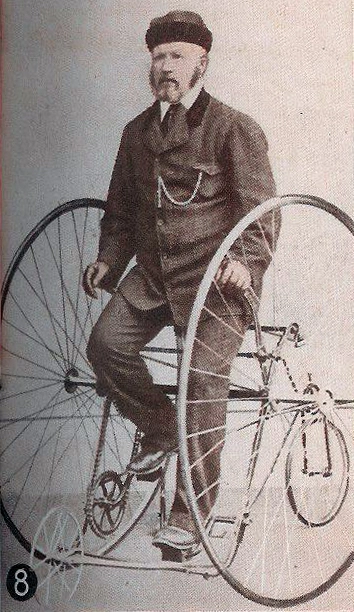
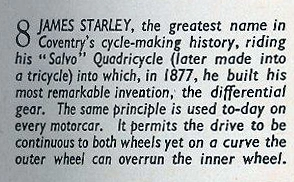
********************
1884 Plectocycle Front-Steering Tricycle
Being some of the first vehicles fitted with a differential gear, high wheeler tricycles such as this were the forerunner of the automobile.
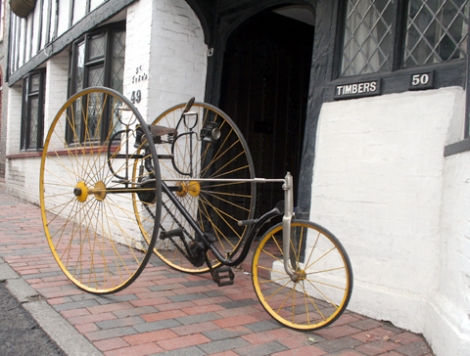
This reproduction 19th century tricycle has been designed around the 1884 Plectocycle. It has been very well manufactured in the authentic style, with original components, is fully functional, and it’s hard to tell it apart from an original 1880s tricycle.

It certainly gets a lot of attention wherever it goes (photographed here around the streets of Lewes).
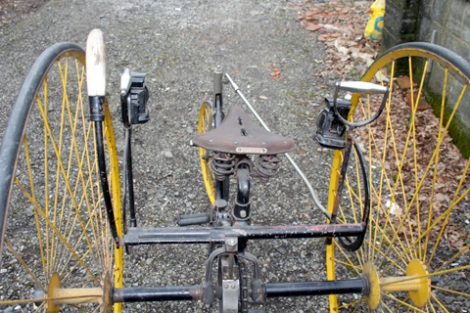
It has chain-driven rear wheels with rack-and-pinion steering to the front, contracting band-brake to the rear axle, direct spoke to ‘V’ rimmed solid tyre wheels, 20″ steerer and 44″ driver.
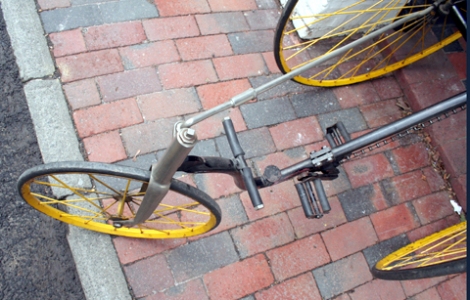
The track is 30″
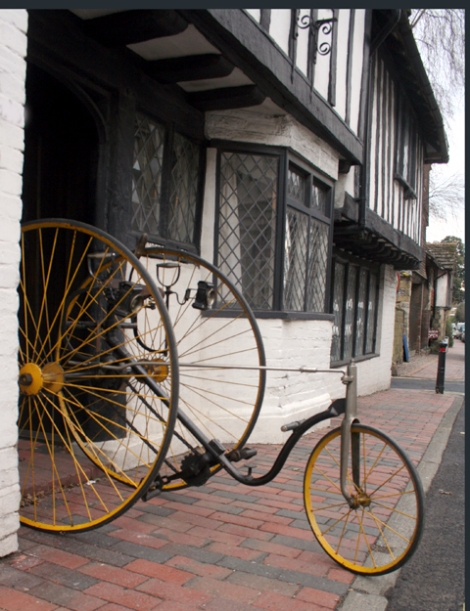
The oil lamps are Lucas ‘Planet’
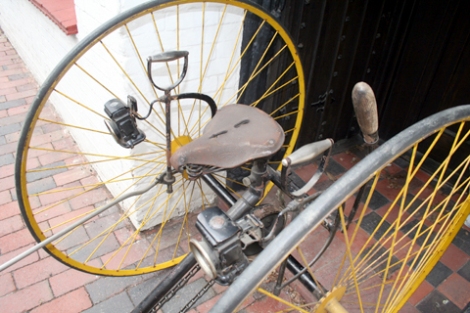
*******************************
PLECTOCYCLE
Bicycle & Tricycle Supply Association, Holborn Viaduct, London
I’ve reproduced details below from my 1885 Vade Mecum so you can compare the design. The original Plectocycle used a patent Singer telescopic axle, a remarkable device which allowed you to remove a screw and reduce the width of the tricycle from 38″ to 28″ so you could park it inside the house. My tricycle does not have a telescopic axle. Obviously an original machine would be worth a five-figure sum.
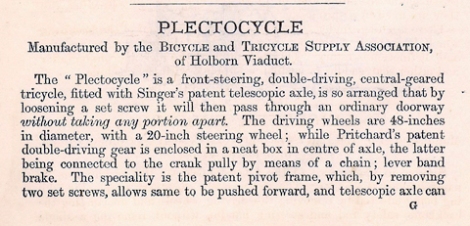
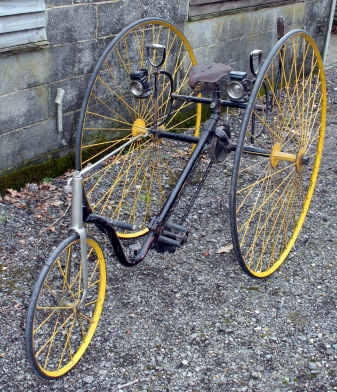
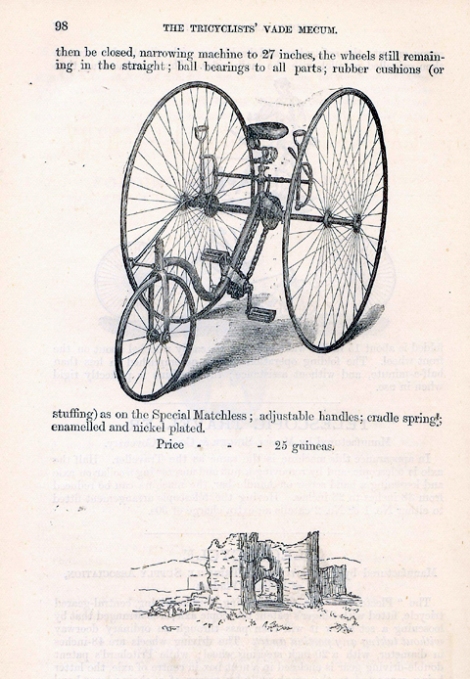
*******************************
Owning and Riding a ‘Plectocycle’
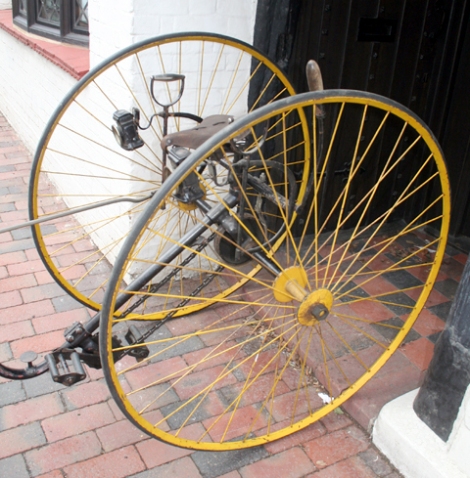
Once you get used to the idea of steering a tricycle via a lever, you find it surprisingly easy to drive. You hold the left-hand lever and steer it with the right. Compared to the later conventional style of tricycle, I find it very well balanced.
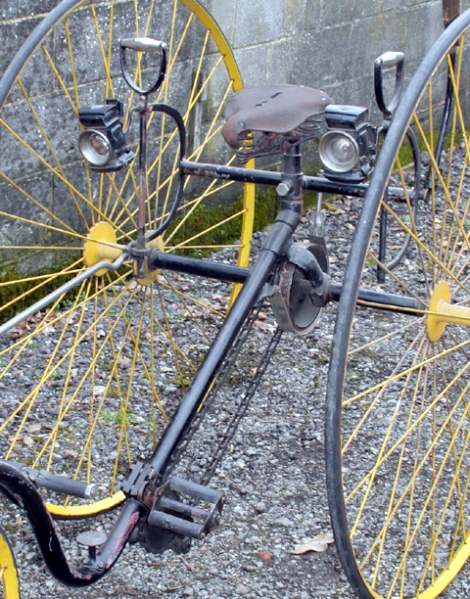
Lever drive tricycles were very popular with women because they did not interfere with their dresses. Modesty was very important in that era and cartoons of the day satirizing the new-fangled cycling craze often depicted women riders immodestly attired. In some parts of the world, the newly-formed lady cyclist clubs required male escorts when they went on runs to protect them from stone-throwing.
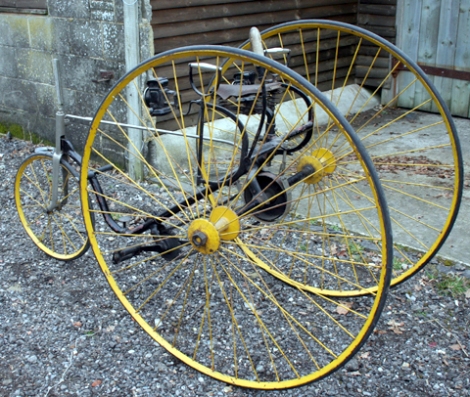
SUMMARY
What I particularly like about this tricycle is its simple design, which means it’s easy to maintain. I have many obscure vehicles that are superb collectors items …but are so unusable they rarely see the light of day. We collectors do also enjoy being able to wheel out our rarities to ride them ![]()
Such is the quality of the workmanship on this tricycle that apparently it was previously purchased by a museum as genuine 19th century. Of course, when ‘antiques’ are made using identical methods to the originals, it can be hard to tell the difference.
ORIGINAL v REPRODUCTION: I hope you appreciate that the difference here is that original 19th century components are fitted, but the actual frame of the machine and the front forks have been re-manufactured. If you have a small length of the original frame but everything else is new it can be considered ‘original.’ On this one, there might be more of it from the 1800s than not, but if the actual frame is not the original one, it must be described as a reproduction.
At a practical level, it has sturdy framework and with its total rebuild should easily see out the next 125 years. Though its investment value is obvious, it would be a shame to treat it solely as such. The advantage of buying 19th century vehicles rather than trusting banks or the stock market with your savings is that while your investment appreciates you can have so much pleasure using them.
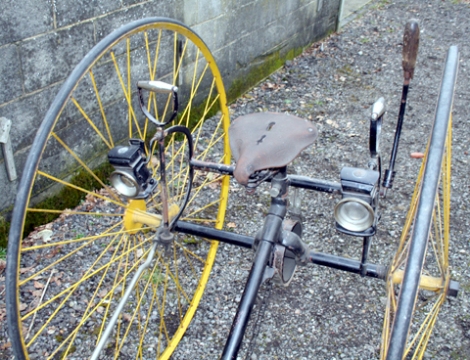
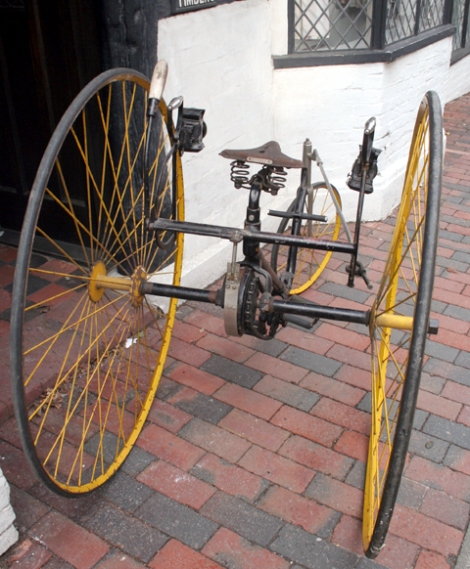
********************
PLECTOCYCLE CATALOGUE
